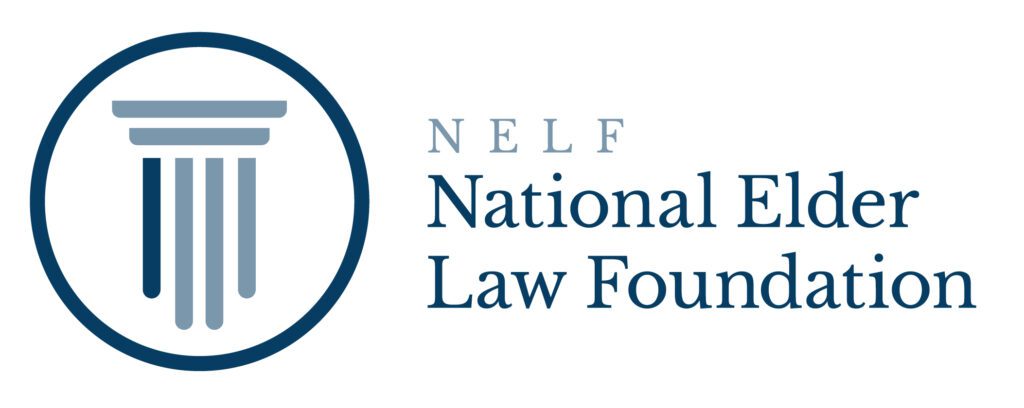The SECURE Act has upended the rules for IRA, 401(k)s and similar retirement plans. It increases the income taxes that will have to be paid by your children when they inherit your IRA balance at your death. If you have an IRA that is likely to have a balance remaining when you die, this is a good time to meet with your financial planner and elder law attorney to discuss how the changes will impact your heirs. There may be steps you can take now that will greatly reduce the tax burden that your heirs will eventually face.
The purpose of this article is to illustrate some of the kinds of options that may make sense for you to incorporate into your estate plan. [For an overview of the changes made by the SECURE Act see my earlier article New Tax Law Changes Rules for IRAs].
For the sake of simplicity, I refer to IRAs below. Rules may differ somewhat for a Designated Roth 401(k) account. See the IRS article Ten Differences Between a Roth IRA and a Designated Roth account.
The SECURE Act changes the distribution rules for IRAs inherited from an account owner who dies in 2020 and later. Most non-spouse inheritors can no longer “stretch” the distributions over their life expectancy. They must withdraw the entire balance of the IRA before the end of the 10th year following the account owner’s death. This means taxes will need to be paid sooner and tax deferral periods will be shortened. On the positive side – there are no required minimum distributions during the 10-year period.
Make no mistake – the imposition of the 10-year rule is a big tax increase on inheritors of IRAs. According to the Congressional Research Service the elimination of the stretch will generate $15.7 billion in additional taxes in the first year alone.
Here are some ways that the account owner can, during lifetime, plan to reduce the tax burden on the beneficiaries of an IRA.
Planning Ideas – Estate Planning for an IRA after the SECURE Act
- Make Maximum Use of Roth Accounts. Roth IRAs are a highly favored type of retirement plan.
- Qualified distributions from Roth IRAs are tax free whether paid to the account owner during lifetime or to his or her beneficiaries after death.
- There are no required distributions from a Roth IRA during the account owner’s lifetime. The entire account can continue to grow tax free.
- Under pre-SECURE Act rules non-spouse beneficiaries had to start taking annual Required Minimum Distributions (RMDs) from an inherited Roth IRA after the account owner’s death. But the SECURE Act does away with RMDs on most inherited IRAs including Roth accounts (when the account owner’s death occurs in 2020 or after). This means that beneficiaries of an inherited Roth IRA can allow the money to compound tax-free for a full ten years after the account owner’s death. Here is an illustration of how this can work to reduce the taxes and enhance the inheritance received by the beneficiaries:
John, age 73, has a traditional IRA with a balance of $50,000. He doesn’t need this money right now and would like his daughter Jill to inherit it upon his death. He converts it to a Roth IRA and pays the income tax on the $50,000. Let’s assume that the $50,000 in taxable income moves John into the 24% tax bracket and that he therefore pays $12,000 on this income in the year of the conversion.
John is not required to and does not make any withdrawals from the Roth IRA during the next 9 years when John dies. Assume further that the account grew at the average rate of 8% a year during that 9-year period. (The historic average return on a balanced portfolio of 50% stocks and 50% bonds during the 100 years from 1916 to 2016 was 8.3%.) By the time of John’s death, the Roth IRA is worth $100,000.
The Roth IRA is inherited by John’s daughter Jill. As permitted by the SECURE Act Jill does not make any withdrawals from the Roth IRA which continues to grow tax free for the 10 years following John’s death. At the end of the 10th year Jill withdraws the entire balance of the Roth IRA which if it grew at 8% a year is now worth $216,000. The entire distribution passes to Jill free of federal income tax.
Because John was willing to pay the income tax on $50,000 of income in the year of the conversion, John was able to provide his daughter with a $216,000 tax-free inheritance 19 years later.
Roth conversions can be implemented over a number of years in order to minimize the initial income tax impact. For younger account owners, it may make tax sense to try to complete their Roth conversion before they reach age 72 when traditional IRAs are subject to RMD requirements.
- Use Traditional IRAs for Charitable Contributions. If you are charitably inclined, it may make tax-sense to make gifts from your traditional IRA. Traditional IRAs carry a deferred income tax liability that may be avoided when given to a qualified tax-exempt charity. Subject to certain rules and limitations, gifts made by an account owner who is over age 70 ½ directly from a traditional IRA (called a Qualified Charitable Distribution or QCD), can reduce your RMD (and adjusted gross income) for the year. You can also make charitable gifts by naming the charity as beneficiary of the IRA, or by creating and naming a charitable remainder trust as beneficiary. Naming a charity as beneficiary of a traditional IRA can reduce both income taxes and Pennsylvania inheritance taxes. Here is an example.
Margaret owns a $50,000 life insurance policy which names her church as beneficiary. She also owns an IRA which names her niece Fiona as beneficiary. During an estate planning appointment Margaret’s lawyer suggests that it would save both income taxes for Fiona and inheritance taxes for Margaret’s estate if she switched things around.
Under her current set-up her IRA will be subject to inheritance tax when she dies and Fiona will have to pay income tax on the withdrawals she has to make from it. The lawyer suggests that Margaret leave the life insurance to Fiona and name the church as beneficiary of $50,000 of the IRA. Since the charity is tax-exempt, there will be neither inheritance nor income tax on this gift. And since life insurance is exempt from Pennsylvania inheritance tax and carries no deferred income tax liability, Fiona will receive these proceeds free of tax as well. The tax savings should amount to $6,000 in inheritance tax ($50,000 X 12%). In addition, Fiona will save income tax by receiving the tax-free life insurance instead of the taxable IRA proceeds. If Fiona is in the 22% income tax bracket this will save her $11,000. Total tax savings = $17,000.
- Split IRA Beneficiaries. If you are married, consider splitting the beneficiaries on your IRAs between spouse and other beneficiaries. (This option assumes that the spouses will be financially secure without the full inherited IRA). Consider the following example.
Ann and Ben are retired professionals. They have one child, Craig. Ann’s traditional IRA has a balance of $1 million and Ben’s is worth $900,000. The couple has real estate and other assets sufficient to provide them with comfort and security for the rest of their lives. They are pretty certain that they will not need to withdraw the balances in their IRAs before death. They want Craig to be the ultimate recipient of the money in the IRAs.
Under their current set-up Ann and Ben have named each other as primary beneficiary of their IRAs and Craig as the contingent beneficiary. This means Craig is set to inherit what is left in both plans at the death of his surviving parent. Under prior law, Craig would be able to extend distributions from the inherited IRAs over his lifetime. But under the new SECURE Act rules he will now be forced to take out the entire balance he inherits over only 10 years. This will force Craig into a tax trap that will result in Craig paying taxes on the inheritance at very high tax rates as he makes withdrawals. Even if the IRAs do not grow during his parents’ remaining lives, Craig would have to withdraw the entire 1.9 million by the end of the tenth year follow the death of his last parent.
To help with this tax problem, Ann and Ben each name Craig as a primary beneficiary on their IRA so that he will receive some of this inheritance on the death of the first parent and some on the death of the second parent. This may effectively allow Craig to stretch out his taxable withdrawals for more than 10 years – potentially up to 20 years. This could result in a substantial reduction in Craig’s income taxes.
Bottom Line. The Government has raised income taxes on the people who will inherit your IRA. You can fight back with smart estate planning. This article illustrates a couple of examples of the kinds of planning that might help. Of course, everyone has different circumstances and goals. Talk with your tax advisor, financial planner and elder law attorney to set up a plan that makes sense for you and your beneficiaries.




